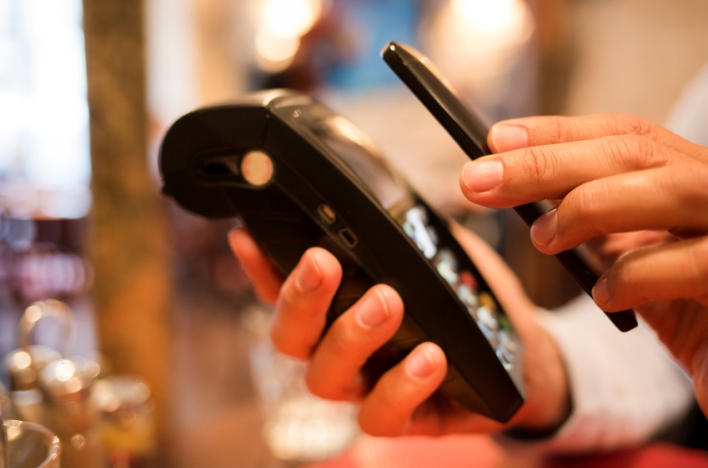When it was introduced last fall, Apple Pay captured the public’s imagination. Customers wouldn’t have to pull out their credit cards anymore to complete a transaction. They could simply pay with their iPhones.
According to Apple CEO Tim Cook, more than 1 million people signed up to use the service in the first three days. McDonald’s, Walgreens, Whole Foods and other major brands quickly started accepting Apple Pay.
But does the service make sense for a smaller business? Analysts say Apple Pay has performed well in its first months, but it still represents only a tiny fraction of payments. And many stores would have to upgrade their point-of-sale equipment in order to process Apple Pay transactions.
What Is Apple Pay?
Apple Pay is a “digital wallet service” that allows customers to pay for goods and services by using their iPhone 6, iPad Air 2 or iPad Mini 3 (and soon an Apple Watch) via Near Field Communication (NFC). NFC is a form of short-range wireless communication that allows the cardholder to process a transaction at a merchant location by holding their mobile device near the NFC-capable terminal. NFC technology is used by most digital wallet solutions.
Apple’s specific technology gives added security for consumers, but it also means that Apple must convince issuing banks to work with its system, whereas Google Wallet is designed to work with every issuing bank and credit card provider. This may prove to be a hurdle for Apple.
What Are the Advantages and Disadvantages?
Apple Pay simply offers another way for retailers to capture a sale. The novelty of
the technology and simple ease of use could encourage customers to use Apple Pay. Plus, dozens of major companies now accept the service, which could help make Apple Pay the preferred payment method for many consumers. For businesses, however, the immediate incentives for adding Apple Pay are small. They still have to pay the same credit card fees.
Furthermore, businesses need to have point-of-sale equipment that supports NFC. This is an added cost that many smaller businesses are finding it hard to justify to simply support Apple Pay.
However, as more banks and credit card companies issue fraud-resistant “smart cards” (also known as EMV cards) to customers this year, many retailers already need to upgrade their point-of-sale equipment. Many of them may decide to go ahead and buy equipment that also supports NFC technology, potentially paving the way for Apple Pay and other digital wallets.
Is Apple Pay Right For Your Business?
Uptake of Apple Pay across all retailers will be slow, so there’s no immediate need to buy Apple Pay-compatible terminals right now. However, if your business is already replacing its point-of-sale equipment, be sure the new equipment is NFC-ready.
Be cautious to not overpay for NFC-ready solutions. Most new terminals are equipped with NFC capability, and they cost about $300. As for point-of-sale card readers that are smart card-ready and support NFC and Apple Pay, the costs can vary greatly depending on the point-of-sale system being used at the business.
The success of Apple Pay will depend on the willingness of issuing banks to partner with Apple, and even more so on the consumer’s willingness to adopt the payment technology. If more retailers and customers start accepting Apple Pay as a preferred payment method, the need to integrate Apple Pay into your current point-of-sale systems may become more important. Right now, however, there seems to be little urgency to upgrade point-of-sale equipment to support Apple Pay.


